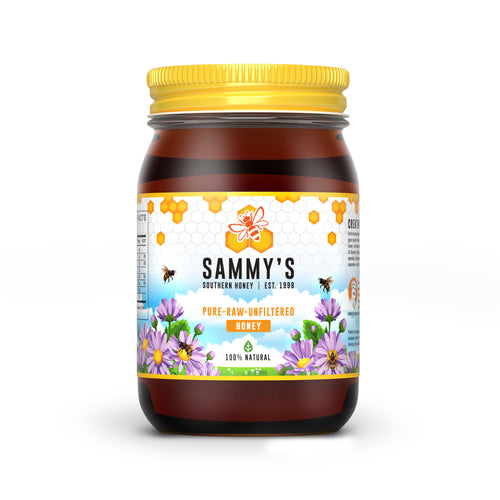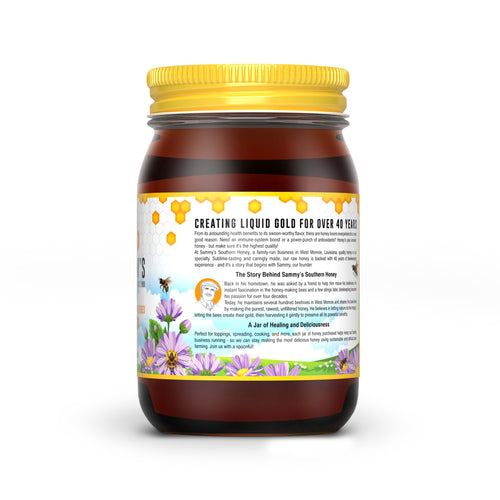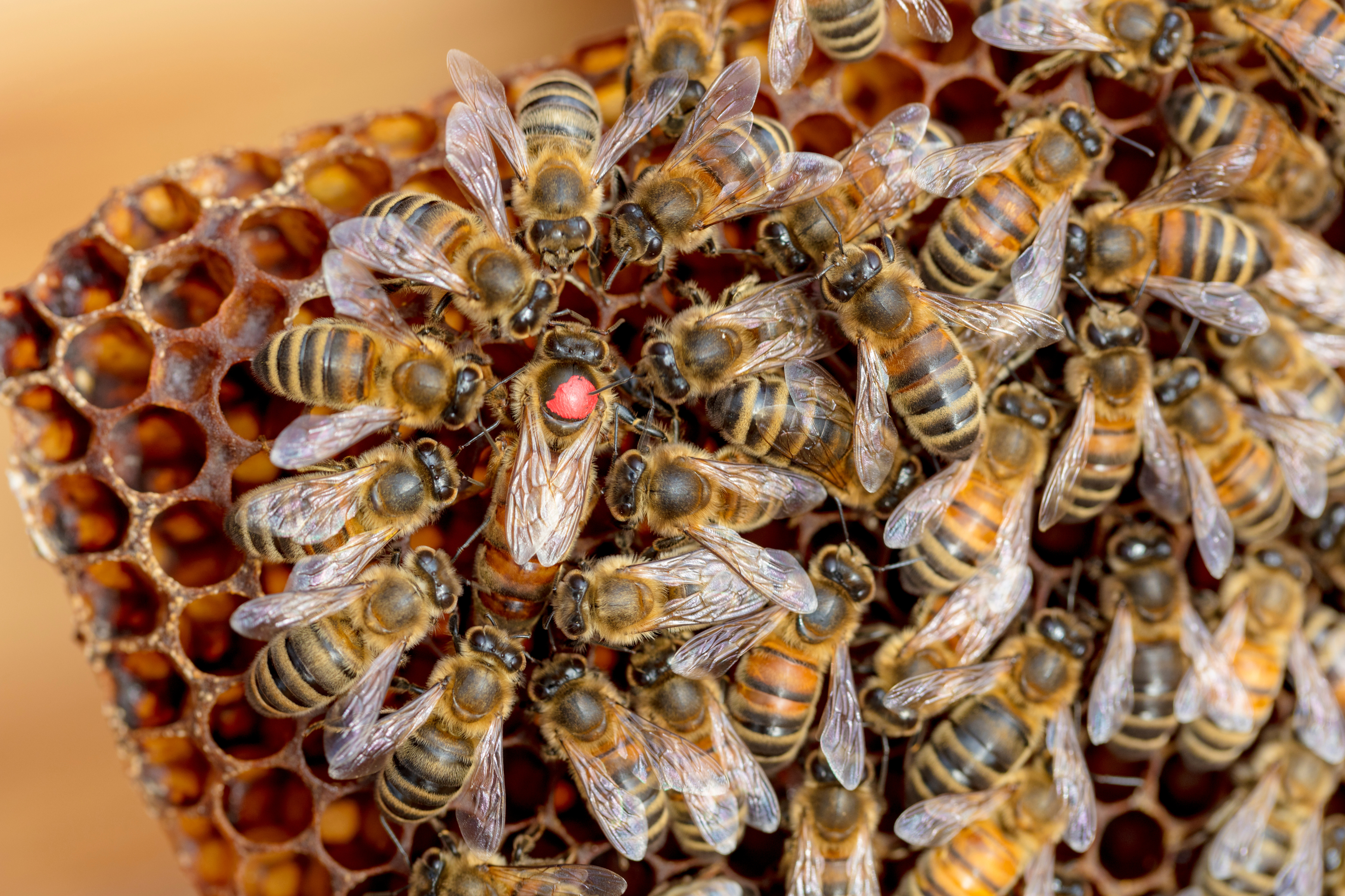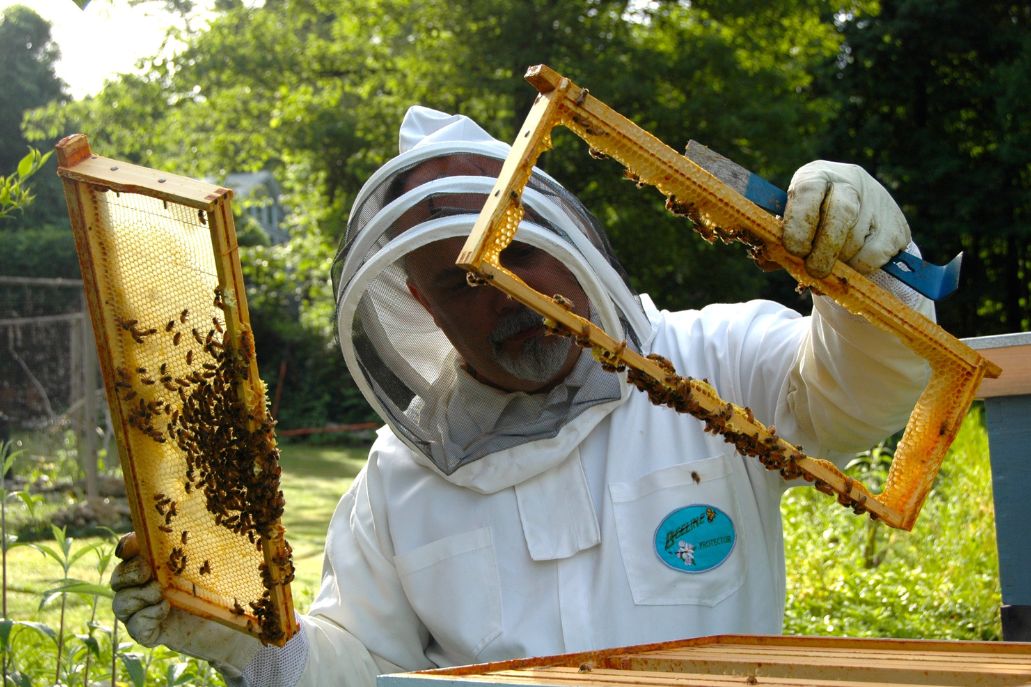Honeybees are small but mighty. Did you know that 90% of wild plants and 75% of global crops depend on animal pollination? Every one out of three mouthful of our good depends on pollinators, like the humble honeybee. You can find honeybees everywhere from the sand dues to wetlands and gravel pits. They’ll make their home wherever there is plants and flowers to pollinate.
There’s no denying that we can do more to help our honeybees. Different species of bees are already declining, with two bumblebee species having gone extinct in the UK. Learning more about honeybees can help you understand how to protect them and come to appreciate their work.
If honeybees are your favorite animal – or you think you can relate to this symbol of good luck – then this article is for you. We’re covering 10 amazing facts about honeybees that are guaranteed to impress your friends and family. Whether it’s the fact that bees have four wings or about their ‘waggle dance’, these facts will give you a newfound appreciation of our favorite honeybees.
1. Bees have four wings, five eyes, and smelly feet.
It’s easy to assume that a bee has four wings. In reality, a honeybee has four wings. There are two wings on each side of a bee, with the wings hooked together to create one larger pair. This layering is why it appears as though a bee has only one set of wings instead of two. Honeybees can fly at up to 15 miles per hour with a wings stroke of 11,400 times per minute, giving them their buzzing sound.
When a bee is not flying, they unhook their wings and enjoy using all four. Another little-known fact about honeybees is that they have five eyes. Yep, five eyes instead of two.
Along with its four wings, we can guarantee that you didn’t know about its feet! Research carried out at the University of Bristol found that honeybees use their ‘smelly footprints’ in order to distinguish between their own scent and that of someone else. With this trail, the honeybee will always be able to get back to where it needs to go.
Similarly, honeybees each have a distinctive scent to their home, allowing them to easily identify their members. Although beekeepers typically try to assimilate their colonies, the containers they’re placed in allow bees to become familiar with the smell and space. Beekeepers will keep the pack near a heat source, which would cause anything to go bad.
2. Bees have a poppy seed brain
The humble honeybee has a brain the size of a poppy seed. While research has seen them do adventurous things, including scoring a goal in ‘bee football’, bees aren’t as clever as they might appear. This fact is amazing when you consider that bees have to travel over 5,000 miles in order to product around 1 pound of honey
It’s also extraordinary when you consider the fact that it takes over 500 workers and 2 million flowers to pollinate every summer. It’s worth mentioning that honey has its own unique flavors and colors, which all depend on the location they’re visiting and the kind of flowers that they’re polluting. During one collection fight, a honeybee will visit between 50 to 100 followers as part of a new collection.
3. Meet the Queen Bee
As Queen, the honeybee will be the largest in her hive and harvest 2,000 eggs every day, coming in at twice its body weight. The queen lives for 2-3 years with only one queen for every hive. The Queen is constantly cared for by the other bees, including being groomed and constantly fed.

During the spring and summer, a popular colony can have anywhere from 40,000 to 60,000 bees, with the Queen reigning over them all. As the Queen is busiest in the summer months, this is when the hive is at its strongest.
When the queen of a hive dives, the workers within the hive start to work to create a new young bee. This process happens when they select a young larvae and feed them a special food known as ‘royal jelly’, This so-called royal jelly transforms the young larva into a fertile Queen ready to rule over her followers, giving her the vitamins and nutrients, she needs to become queen. Nurse honeybees work inside the hive and exist to make the royal jelly.
4. The heritage of honeybees in ancient history
Bees are amongst the oldest animals still present in society today. They have been producing honey for at least 150 million years. Before the days of science, legend had it that flower nectar was turned into honey with magic. For generations, honeybees remained one of the great mysteries of nature, which remained unchanged for most of their life.
An ancient painting that depicts an androgynous figure heading out of the hive was found in Valencia’s Cave of the Spider. The painting was estimated to be over 15,000 years old. These examples show the historical significance of different people – and how none of this would be possible without him.
The power of honey – and the secret to its longevity – is that it never goes bad. It’s designed for human to eat, reminding everyone of the need to provide bells with green spaces to produce their honey. This unique natural product will never go bad and typically tastes sweeter than breakfast sat as it contains a higher level of fructose than everyday sugar.
5. The only animal to make honey
Did you know that honeybees are the only animal to make honey? There is no one else there to cultivate it without them. It has to be honeybees specifically to make honey, as bumblebees create honey which has a different taste. While the honeybee makes its honey in small batches, it always makes a surplus and allow my boss to try it. Not only is the honeybee the only animal to make honey, it’s the only insect to make food that is eaten by man.
6. Honeybees was discovered in New Zealand in 1839
The first ‘true’ honeybees were discovered in New Zealand, Australia in 1839. Miss Bunby was an English lady who introduced the iconic European honeybees that we know and love. It would take until the end of the 17th century for honey to make its way to Orlando, following the introduction of it in countries like Spanish, English settlers, and the Dutch.
7. How much honey does a bee produce?
It’s easy to assume that bees must have a comfortable lifestyle and produce an audience of honey. In reality, honeybees fly around at about 15mph, with one bee producing up to 150kg every year.

The average worker in a beehive will make around ½ to 1 teaspoon of honey. This low figure is due to the fact that worker honeybees typically only live for 4 weeks during the spring and summer or up to 6 months in winter. By comparison, the entire hive will produce around 11kg of honey during each season, which translates to roughly 24 jars. Every pound of honey requires bees to fly around 55,000 miles.
8. An opera singer’s secret weapon
Do you ever wonder how opera singers perform their acts? Their special secret is honey. For generations, opera signers have been using honey as a way to soothe their throat before their performance and to get them prepared for spending several hours on stage. Similarly, honey is used by professional athletes to help them recover after a competition or match.
The power of honey comes from its ability to attract and absorb moisture to soothe discomfort, minor burns, or scarring. Today we think of honey as being an anti-microbial agent.
9. The ‘Waggle Dance’
Have you ever looked at a bee and thought it was dancing? It was! Bees have a so-called ‘waggle dance’ that they use to teach each other direction and how to find food sources. The waggle dance is often thought of as being like a sat nav for bees, helping them move in a precise direction with the rest of the hive following them.
10. Organic farming and honeybees
With conservation work underway to protect bees, it’s no surprise that there is an estimated 75% more wild bees on organic farms than anywhere else. Organic farming has a role to play in helping to protect our wildlife and nature, including bees.
Honeybees are more likely to be attracted to organic farms as they use fewer pesticides and typically incorporate habitats that are made with bees in mind, such as wildflower margins. It’s a win-win situation for farmers as honeybees help them to produce between food and keep their running costs low.
Honey Facts
Honey Bees have extreme sense of smell which allows them to find their hive and they dance when they return to the hive to tell the other bees where the flowers are. Also, 99% of the bee colony is composed of female bees known as WORKER bees. Worker honey bees transform the floral nectar that gather into honey by adding enzymes to the nectar and reducing the moisture.
SAMMY'S SOUTHERN HONEY


Thank You!
Each jar of honey purchased helps to keep our hardworking family business in operation, and allows Sammy to continue sustainable and ethical bee farming here in the heart of Louisiana. Add some Sammy’s Southern Honey sweetness to your life today!








